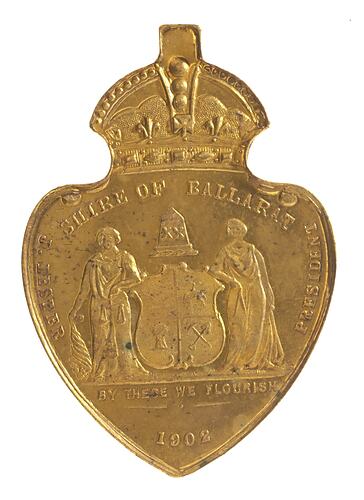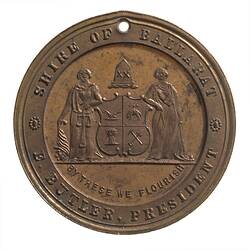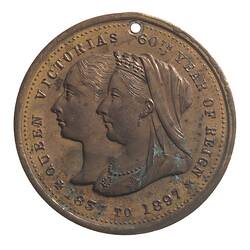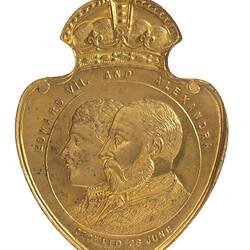Ballarat is Victoria's largest inland city. It was founded in 1838 when William Yuille, a squatter, camped on the shores of the Black Swamp, now known as Lake Wendouree. 'Balla' 'Arat' was derived from an indigenous word meaning resting or camping place.
Gold was discovered 13 years later at Poverty Point, in 1851. John Dunlop and James Regan found a few ounces while panning in the Canadian Creek. By the following year there were around 20,000 diggers in the Ballarat goldfields. Ballarat was proclaimed a town in 1852. It was a municipality by 1855, a borough by 1863 and a city in 1870. The Ballarat City Council was created on 6 May 1994. It comprised the City of Ballaarat and Shire of Ballarat, the Borough of Sebastopol, parts of the Shire of Bungaree, Buninyong, Grenville and Ripon.
In 1858 the second largest gold nugget ever found in Australia, the 'Welcome Nugget', was found at Bakery Hill, Ballarat. By the 1860s, however, many of Ballarat's alluvial mines had declined and companies were formed to start much deeper mining in the West and South of Ballarat. Foundries such as the Phoenix Foundry were established to manufacture the heavy equipment needed. By now, the town was also supported by industries such as flour mills and agriculture-related businesses. When the rail came through in 1862 it provided further economic stimulus. When the last mine closed in 1918 Ballarat had enough industry and service bases to provide on-going support for its community.
Today Ballarat is a major industrial city with well known companies such as Mars Confectionery, McCains Foods, Bendix Mintex and Timken. Some of the area's primary industries include gold, clay, potatoes, wool and meat.
References:
Ballarat history website http://www.ballarat.com/history.htm, accessed 20/10/2003.
More Information
-
Keywords
-
Localities
-
Authors
-
Article types




